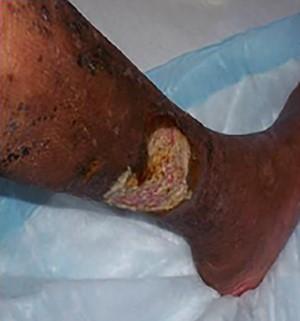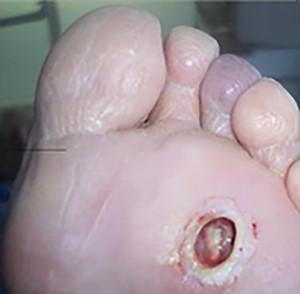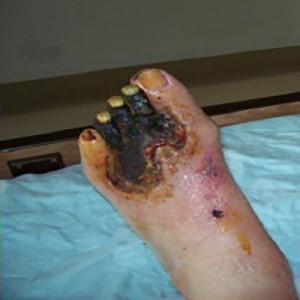Lower Extremity Wound Pathway
People with diabetes or other problems that affect blood circulation can develop ulcers (open wounds) on their legs or feet. Leg and foot wounds associated with poor circulation do not get better by themselves. They can sometimes get worse very quickly, but they can usually heal with treatment from a doctor or nurse.
The purpose of this pathway is to make sure that people with these types of wounds get the right care as soon as possible, to promote wound healing, prevent hospital visits, and avoid the possibility of amputation.
What can you do, as a patient
- Tell your doctor or nurse if you notice an open wound on your legs or feet, especially if you have risk factors that affect your blood circulation. Do not treat the wound yourself or “suffer in silence”.
- If you know that you have risk factors, pay attention to your legs and feet and be extra careful to prevent cuts or other wounds. Risk factors include:
- heart disease, kidney disease;
- diabetes, especially if you have lost some of the feeling in your feet;
- smoking;
- obesity;
- lack of mobility; and
- previous leg wounds or injuries.
-
If you have a wound, follow the treatment carefully so you can heal faster. Ask your doctor or nurse for help if you have any problem with the treatment.
- Keep your legs and feet healthy. Many people will have problems with circulation as they age, but there are some things you can do to prevent wounds from happening:
- Exercise your legs regularly – walk, swim, cycle, or anything you like. Exercising your legs helps to keep your blood pumping.
- Avoid sitting or standing for long periods of time. If you do, try to alternate by resting, moving around, raising your legs or moving your feet around while seated.
- Care for your skin with simple, unscented moisturizer. Problems with circulation can make your skin get dry or flaky, which makes it easier for wounds to happen.
- Don’t wear tight socks or shoes. Wear good shoes that fit properly.
- Reduce risk factors if you can, and follow treatment for chronic diseases.
People with diabetes have additional risk factors. If you have diabetes, talk to your health-care provider about caring for your feet.
Types of wounds
Tell your health-care provider if you have a leg or foot wound, and he or she will tell you what type of wound it is. There are different treatments for different types of wounds.
Venous ulcer
British Columbia Provincial Nursing Skin and Wound Care Committee. [Venous ulcer]. June 2011. Available from: https://www.clwk.ca/get-resource/venous-ulcers/
Warning signs of a venous ulcer:
- aching or swelling in your legs;
- red, flaky, scaly and itchy skin on your legs;
- swollen and enlarged veins on your legs;
- discoloration such as redness or brown (hyper-pigmented) areas; and
- skin is breaking down in the “gaitor” area of your leg, between your ankle and your calf.
Related documents
Diabetic ulcer
British Columbia Provincial Nursing Skin and Wound Care Committee. [Diabetic ulcer]. May 2011. Available from: https://www.clwk.ca/get-resource/diabetic-neuropathic-ulcers/
Warning signs of a diabetic ulcer:
- a red spot, blister or callous on your feet (usually caused by rubbing on your shoes);
- a bruise, bump or scratch on your feet that leaves a mark;
- red, dry or cracked skin on your feet and toes;
- minor deformities of your feet or toes that cause them to rub on your shoes;
- signs of infection like pain, fever or chills (could mean there is a wound on your foot where you cannot see it).
If you have diabetes, talk to your health-care provider about caring for your feet.
Related documents
Arterial ulcer
British Columbia Provincial Nursing Skin and Wound Care Committee. [Arterial ulcer]. May 2011. Available from: https://www.clwk.ca/get-resource/arterial-ulcers/
Warning signs of an arterial ulcer:
- pain, achiness, fatigue, burning, or discomfort in the muscles of your feet, calves, or thighs (these symptoms usually appear during walking or exercise and go away after several minutes of rest);
- your legs or feet may feel numb when you are at rest;
- legs feel cool to the touch;
- paleness of the skin or blue color in the toes or foot;
- pain and cramps at night;
- pain that is worse when you raise the leg and improves when you dangle your legs over the side of the bed;
- hair loss over the toes and feet;
- shiny, tight skin; and
- thick toenails.





